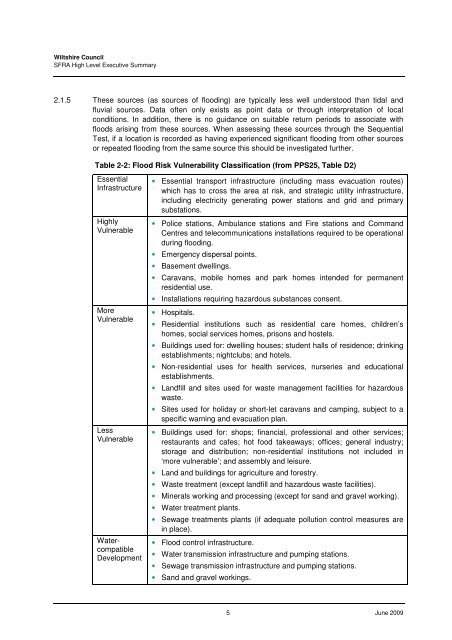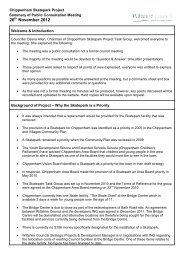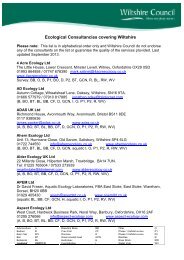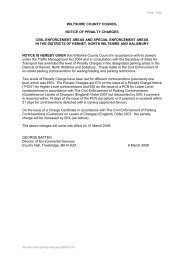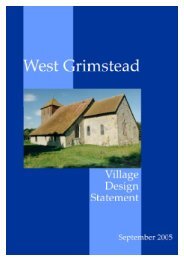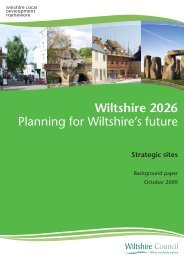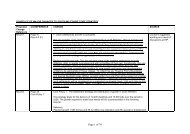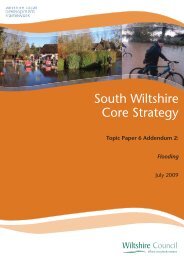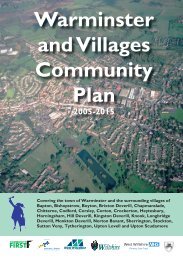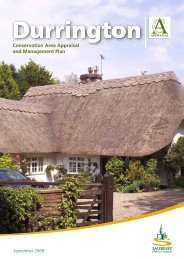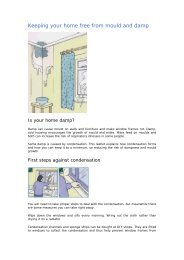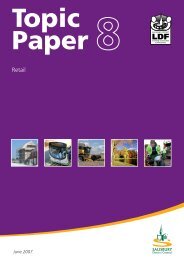Strategic Flood Risk Assessment - Wiltshire Council
Strategic Flood Risk Assessment - Wiltshire Council
Strategic Flood Risk Assessment - Wiltshire Council
You also want an ePaper? Increase the reach of your titles
YUMPU automatically turns print PDFs into web optimized ePapers that Google loves.
<strong>Wiltshire</strong> <strong>Council</strong>SFRA High Level Executive Summary2.1.5 These sources (as sources of flooding) are typically less well understood than tidal andfluvial sources. Data often only exists as point data or through interpretation of localconditions. In addition, there is no guidance on suitable return periods to associate withfloods arising from these sources. When assessing these sources through the SequentialTest, if a location is recorded as having experienced significant flooding from other sourcesor repeated flooding from the same source this should be investigated further.Table 2-2: <strong>Flood</strong> <strong>Risk</strong> Vulnerability Classification (from PPS25, Table D2)EssentialInfrastructureHighlyVulnerableMoreVulnerableLessVulnerableWatercompatibleDevelopment• Essential transport infrastructure (including mass evacuation routes)which has to cross the area at risk, and strategic utility infrastructure,including electricity generating power stations and grid and primarysubstations.• Police stations, Ambulance stations and Fire stations and CommandCentres and telecommunications installations required to be operationalduring flooding.• Emergency dispersal points.• Basement dwellings.• Caravans, mobile homes and park homes intended for permanentresidential use.• Installations requiring hazardous substances consent.• Hospitals.• Residential institutions such as residential care homes, children’shomes, social services homes, prisons and hostels.• Buildings used for: dwelling houses; student halls of residence; drinkingestablishments; nightclubs; and hotels.• Non-residential uses for health services, nurseries and educationalestablishments.• Landfill and sites used for waste management facilities for hazardouswaste.• Sites used for holiday or short-let caravans and camping, subject to aspecific warning and evacuation plan.• Buildings used for: shops; financial, professional and other services;restaurants and cafes; hot food takeaways; offices; general industry;storage and distribution; non-residential institutions not included in‘more vulnerable’; and assembly and leisure.• Land and buildings for agriculture and forestry.• Waste treatment (except landfill and hazardous waste facilities).• Minerals working and processing (except for sand and gravel working).• Water treatment plants.• Sewage treatments plants (if adequate pollution control measures arein place).• <strong>Flood</strong> control infrastructure.• Water transmission infrastructure and pumping stations.• Sewage transmission infrastructure and pumping stations.• Sand and gravel workings.5 June 2009


